Facebook Ads are one of the best ways to drive new (and repeat) sales.
Never before has a marketing platform had these kinds of laser-focused audience targeting capabilities.
But with such a diverse and hyper-targeted platform, it’s incredibly easy to spend too much money. And fast.
There are countless audiences to create, interests to target, and demographics to focus on.
On top of that, there are nearly limitless ad types that can drain your marketing budget in a single day.
But Facebook is one of the best ways to reach customers.
People spend hours on the platform every week.
But simply running ads all the time is a fast way to lose money.
Almost any brand can find a lot of success on Facebook, but most spend too much money and give up.
It’s almost easy to drain your budget using the platform.
And you can’t risk blowing your entire advertising budget on Facebook.
Thankfully, there are a few ways to lower your Facebook Ad spend and even increase conversions, too.
There are a few ways to spend less yet get more in return.
Here’s why you’re spending too much on Facebook Ads and how to fix it fast.
Where your ad budget is going
First, let’s take a look at why Facebook Ads cost what they do.
There are a lot of variabilities here, and the platform’s pricing depends on a number of important factors.
Overall, it’s actually one of the most cost-effective digital marketing tools out there.
Some businesses routinely spend thousands of dollars, but their ROI makes the cost worth it.
In fact, a four-figure weekly budget is actually modest compared to what some of the bigger players spend on Facebook Ads.
But you can also get your feet wet with a budget of less than $50 if you want to experiment with learning how the platform works.
When it comes to what you’re spending and where that money’s going, it depends on a lot of different things.
But “it depends” isn’t exactly a satisfying answer.
Recently, AdEspresso examined benchmark numbers for average costs per click on Facebook to help us understand what factors lead to increases or decreases in ad costs:
And the data seems to be all over the place. Depending on what country you focus your ad efforts on, your CPC could vary by nearly a dollar.
It can even depend on the age group you’re targeting:
Generally, the older the age group you target, the higher the CPC.
The ad placement makes a difference, too.
Instagram is far more expensive than any other placement on Facebook.
So if you’re advertising only on Instagram, that’s probably why your costs are through the roof:
Even the specific day of the week can have an impact on your budget:
Just about anything on Facebook’s platform can have a big impact on your budget.
Another huge factor is your own budget.
It’s actually possible to run Facebook Ads and enjoy success on as little as $5 a day.
This is part of what makes it such a great ad platform.
It’s powerful enough for huge multinational corporations to use it.
But at the same time, it can be so affordable that even the most cash-strapped “solopreneur” can use it to drive sales.
But, these are just the small reasons.
The ones that create minor variances in ad spend.
Here are the main reasons as to why you are spending too much money on Facebook Ads:
How relevance score can increase or decrease costs
Facebook will algorithmically determine a number for each ad, which is known as the Relevance Score.
And it’s not as top secret as you might think.
Here’s a very simplified form of the equation they’re using.
Now extend that to over 100,000 factors, each of which has a ton of different degrees of freedom.
That’s some serious math!
The point is that, at its core, the relevance score isn’t something completely arbitrary.
It’s the result of algorithmic calculations involving massive amounts of data.
And once the computer systems have crunched all those numbers, you end up with a score on a scale from 1 to 10.
Facebook didn’t start showing this information until 2015, but “relevance” has always been something they’ve taken into account.
Positive feedback includes clicking through, liking the ad, and sharing the ad.
These actions may be given more weight if they’re directly relevant to your campaign objective.
Negative feedback basically means hiding or reporting your ads.
It’s based on the amount of positive feedback and negative feedback an ad gets from its audience.
When people click through, the number goes up. When people hide or report the ad, it goes down.
Users can click for more information about an ad they don’t like, including why they’re seeing it in the first place.
If they hide it because they don’t like it, your relevance score goes down.
The number is calculated based on the relationship between actual feedback and expected feedback.
You can find relevance scores in the Facebook Ads Manager. It looks something like this:
High-relevance scores bring down your cost per click.
If you have a lower relevance score, you can expect to pay more for your ads to show up.
Audience targeting can sink your budget
Audience targeting is where Facebook shines.
You can run super remarketing campaigns that are hyper-specific, targeting everything from income to specific interests.
Some audiences are more expensive than others to target on Facebook.
Why? Because they’re more competitive.
Keep in mind that your ads may be competing with ads from companies that aren’t even in your exact industry.
You’re not just up against your competition, per se.
You’re up against everyone else that wants to target the same distinct niche audience.
If there’s a bunch of competition for that demographic, expect to end up paying more.
For the most part, broader audiences based solely on simple demographics cost more to reach:
Narrowing down your targeting can help eliminate people who won’t convert and drive your costs down.
Audience targeting is one of the places where you’re most likely to make a mistake somewhere along the line.
It can take some time and experimentation to get your targeting just right.
How seasonality can impact sales
Some products and services are seasonal.
Christmas decorations, lawn-care services in cold climates, and Halloween stores are just a few examples.
But even if your product or service isn’t explicitly seasonal, you may still find that consumer purchasing behavior varies by season.
During “peak times” of the year, competition goes up and ad costs go up with it.
The biggest offender on this front, at least in the United States, is that time of year we refer to as “the holiday season.”
For a few months between late autumn and early winter, we’ve got a bunch of holidays one after the other.
And a lot of them, especially Christmas, involve giving other people gifts.
Not to mention buying seasonal decorations, baked goods, and other stuff people consume during the holidays.
It’s worth noting that this is more of an issue for B2C brands than B2B.
If you’re B2B and on a budget, you may even want to scale back your Facebook Ads a little when the holidays roll around.
If you’re reading this in November and December and you’ve been raising an eyebrow at a recent spike in your ad costs, it could be because of the time of year.
Ad placement greatly impacts costs
The placement of your ads also plays a role in your total cost.
Where are they being shown?
Some locations may catch the eye more easily than others, and many brands find that some placements work better than others.
There’s also the issue of competition for prime placement, which can drive up the cost.
There are multiple ad placement options you can choose from. Here are some examples of the most popular ones:
Standard Facebook feed placement:
Facebook Instant articles:
Directly placed, in-feed video:
Right sidebar placements:
And Instagram feed placements:
As you can see, you’ve got a bunch of different options.
Facebook allows you to either choose ad placement manually or have it automatically chosen for you.
Facebook themselves recommend automatic placement, which is designed to optimize for the lowest possible cost.
They also recommend a mix of ads directly on Facebook, and ads on Instagram or the Audience Network.
You might find that Instagram feed ads consistently cost you more than ads in people’s Facebook feeds.
By focusing on the placements that get you the most bang for your buck, you can shave a decent amount off your total ad spend.
Ad delivery optimization can decrease costs
This brings us to the last of the biggest factors in Facebook Ad costs: the optimization of your ad delivery.
You’ll find this setting on Facebook under “Show Advanced Options” if you go to “Budget & Schedule.”
The setting you choose will affect the cost of your ads because it has a significant effect on relevance score.
If you optimize for clicks, you’ll pay on a CPC basis.
If you optimize for conversions, you’ll pay a cost for action (CPA) instead.
The optimization setting you choose will affect which audiences do, or do not, end up seeing your ad.
It’s subtle and hard to track, but you may find that the same ad with different optimization settings ends up with two totally different price points and different results.
You may be able to lower your total ad cost by experimenting with optimization settings for each of your ads or ad sets.
Lower your ad spend with these four tips
Lowering ad spend on Facebook is actually easy.
Thanks to Facebook’s diverse tool sets, we can do this automatically for most things!
Here are four ways you can reduce your ad spend fast.
1. Tweak expensive conversion actions.
If you run e-commerce ads on Facebook, this should be the single most important strategy you use to reduce ad spend.
If you find yourself spending way too much on Facebook Ads, it’s probably because specific actions are taking up the bulk of your costs.
For example, if it costs you $20 in ad spend to get someone to add a product to their cart, it might not be worth it.
To start, create a new rule from the Ads Manage:
Next, you want to select your condition. The condition is the action that will be met that triggers an action.
For example, “if X happens, turn off my ads.”
You can start to select things like add to cart, initiate checkout, and more:
Next, use one of these metrics to adjust your ad spend. You can turn off your ads if this happens, adjust the budget, or adjust your manual bid:
This is a great way to reduce ad costs and put your marketing automation to work!
2. Check your ad frequency. Is your audience getting burned out?
Take a look at your ad frequency settings.
Set the frequency too low and you won’t get enough exposure.
Often, it takes a few views for someone to click your ad or engage with it.
Why? Because people don’t go onto Facebook to view ads. So they likely get busy doing other things.
But set it too high and you’ll end up with what people call “ad saturation.”
Ever see the same YouTube ad over and over and over on the same day? You get sick of it, right?
Even if it was clever, cute, and funny the first few times, it gets old fast.
Thankfully, we can optimize our frequency and put it on autopilot using Facebook’s rule-creation tools.
Head to your Facebook Ads Manager and click “Create Rule”:
Next, here’s what I recommend for the rule settings.
I like to keep it simple, and I’ve found that after 6 ad views, people start to get sick of it and my quality and relevance scores go down.
Here’s how to structure this rule:
The basic result this rule will produce is:
Turning off all active ads when frequency reaches greater than six times.
Meaning that if people view your ad more than six times, they won’t see it again.
I also recommend that you select the email notification to alert you when this happens.
That way, you can come back and create or run new ads.
3. Split-test your ads to see what performs best.
When you don’t know the answer to something — like, “Which audience is more receptive to this Facebook Ad?” — one of the best things you can do is run an experiment to find out.
If you’re not split-testing your ads, you’re missing out.
It’s one of the best ways to optimize Facebook Ad campaigns, and it goes a long way toward cutting costs.
Facebook has split-testing capabilities built into the Ad Manager.
You can split-test based on three criteria:
- Audience
- Delivery optimization
- Ad placements
You can also select from six different objectives for each split test you run.
- Traffic
- App installs
- Lead generation
- Conversions
- Video views
- Reach
These are actually incredibly simple to run, too.
They are one of the easiest forms of split testing I’ve used on an advertising platform.
To get started, open up the Ads Manager and create a new ad:
Select from one of the objectives I listed above that qualifies for split testing:
Any of those will allow you to test your audiences, delivery, and placements.
Next, make sure to select the split-test option before continuing:
Scroll down to the “Variable” section and select your split-testing metrics:
Once you select your test metric, you can start to edit what is tested on each ad set:
Use this feature to see what ad sets work with each audience to produce the cheapest conversions for your ads.
4. Put the brakes on underperforming ads.
You’ll also want to pause ads that aren’t performing well.
If you’re running several different ads on Facebook, there’s a good chance that at least one of them is a dud.
You’re spending more money than this ad is bringing in, driving up your total ad spend.
The crux of running multiple ads is that some just won’t work.
It’s the cycle of life on PPC platforms, and it isn’t something you should get discouraged by.
But rather, you simply need to stay on top of it to make sure it isn’t draining your budget.
To start, navigate to the Facebook Ads Manager via the Business Manager:
On your campaign dashboard, select the “Create Rule” option:
This is a great, automated tool included on Facebook’s platform that will allow you to pause ads that are sucking up money automatically.
Instead of needing to check the platform daily to make sure your spend isn’t climbing, automate it.
Here are some of the main things to focus on with this rule:
You can apply the rule to your active ads, ad sets, or campaigns.
Next, you can choose from the following actions:
So, if your cost per action or result starts to increase and drain your budget, you can adjust the bid or simply turn off the ad.
Here’s what it should look like once you’ve set it up:
Use this automation tool to put the brakes on underperforming ads and save your cash.
Conclusion
Advertising is all about the ROI.
When you run paid ads on Facebook, your goal is trying to make more money than you spend on them.
If you’re losing money — or you just aren’t making enough revenue as a result of your ads — it’s probably time to take a step back and re-evaluate your Facebook Ad campaigns.
Thankfully for us, Facebook has powerful automation tools.
You can tweak expensive conversion actions that are costing too much money.
Next, check your ad frequency. Make sure you aren’t sending too many ads to the same audience.
This can often drive ad costs up by reducing relevance scores.
Split test your ads to find out what audience is driving the cheapest conversions.
Lastly, put the brakes on underperforming ads that are simply draining your ad budget.
If there’s a problem, then chances are it’s a problem you can fix.
What tactics have you used to keep Facebook Ad costs low?
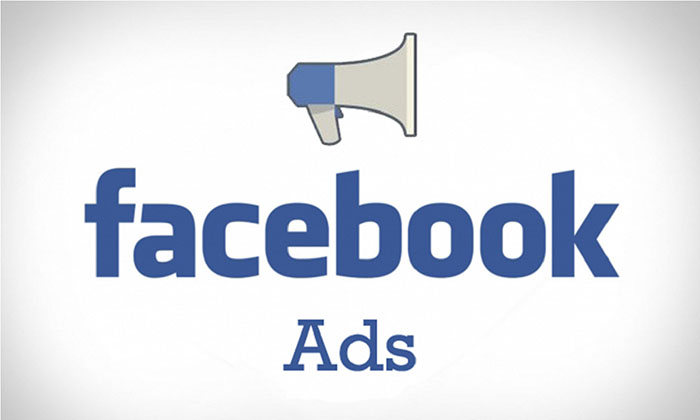
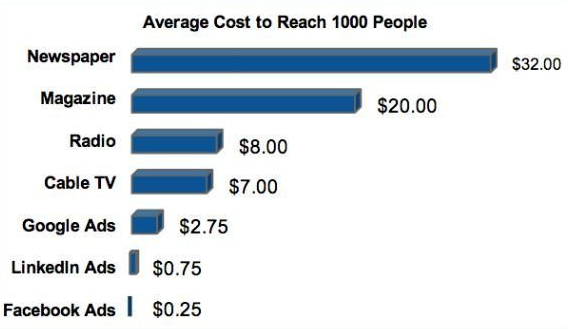
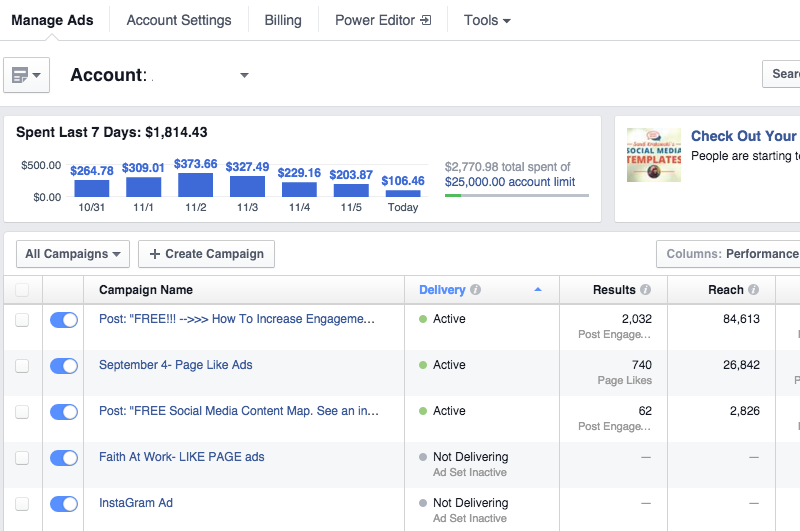

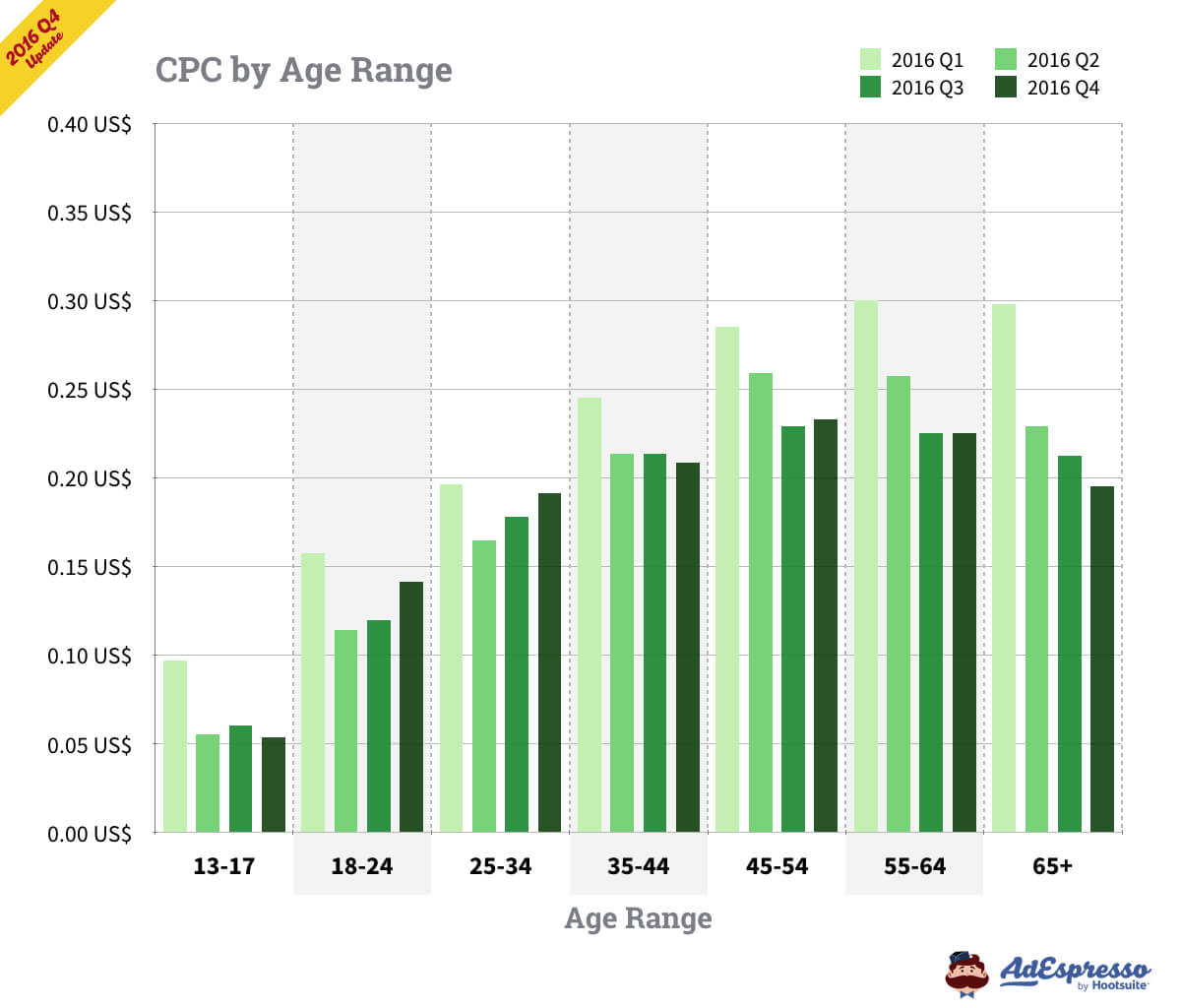

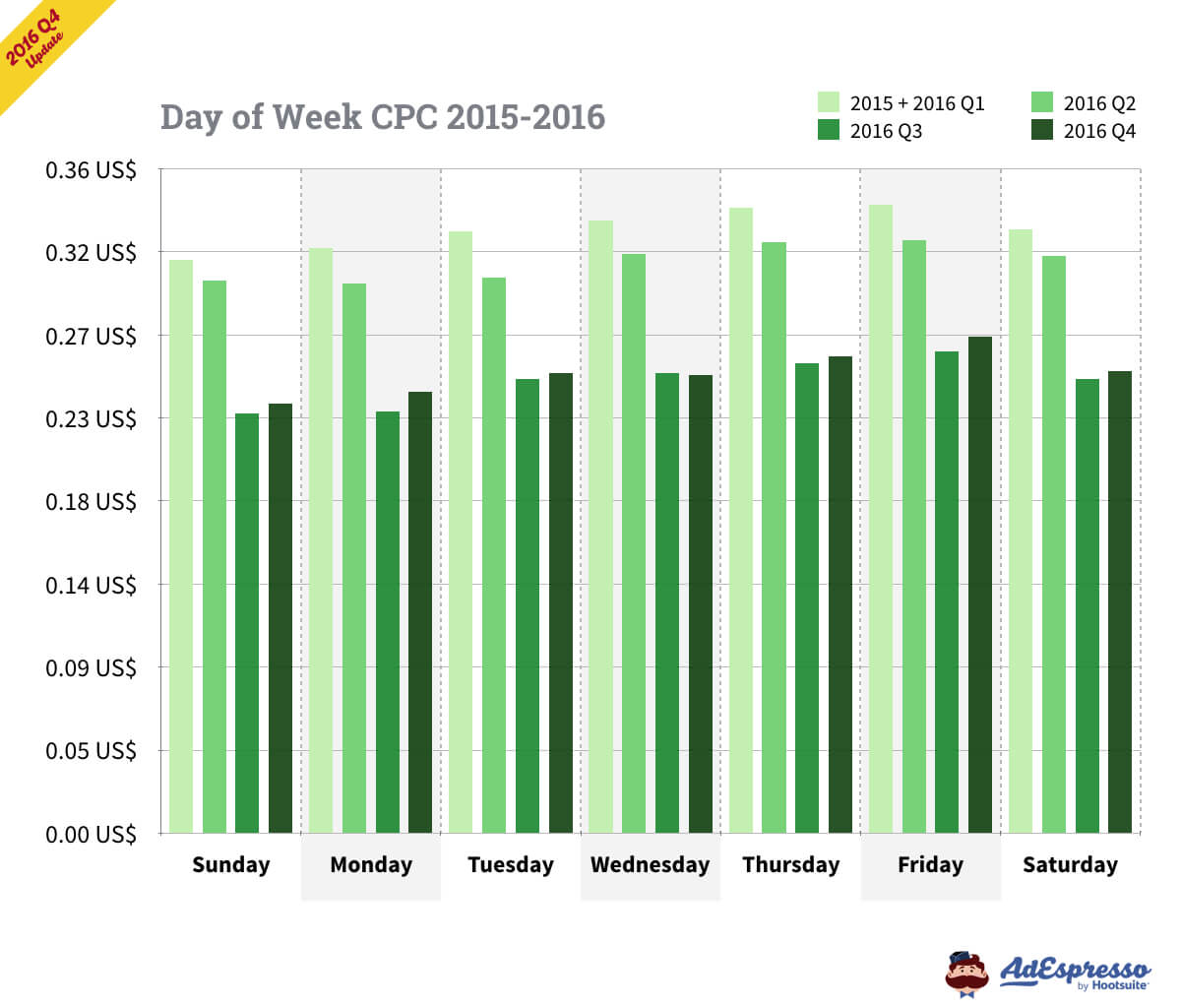
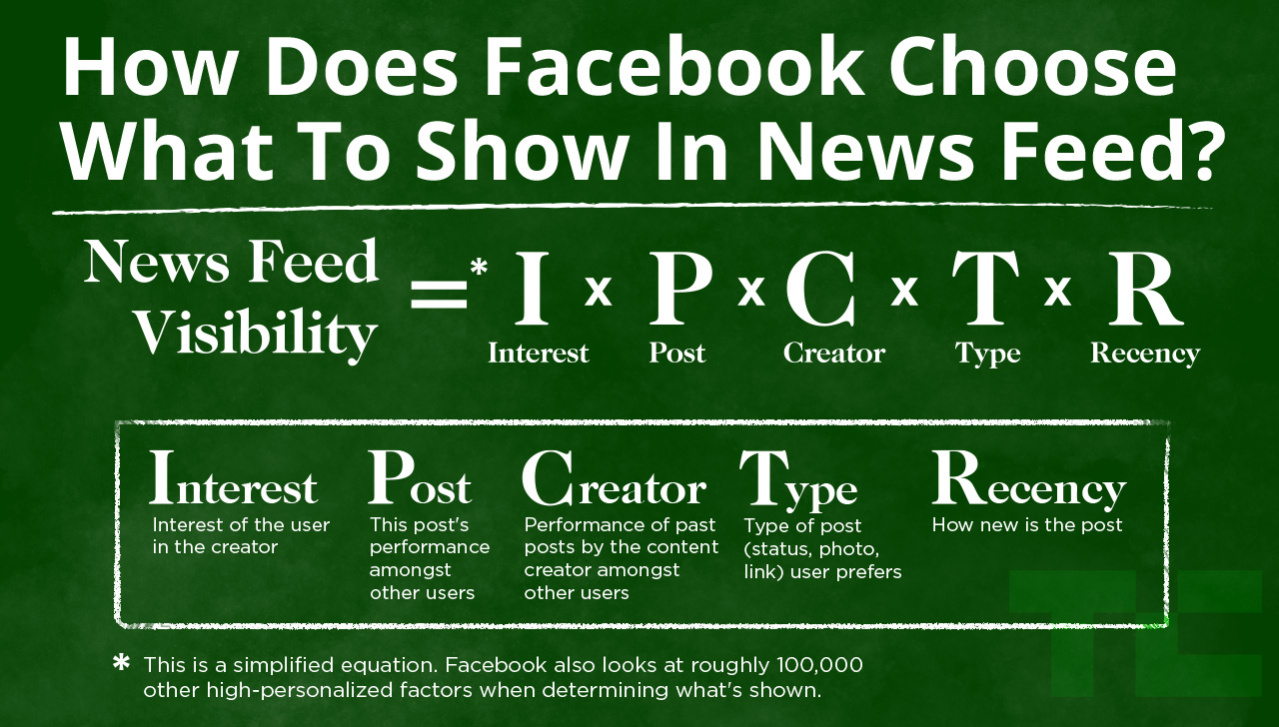
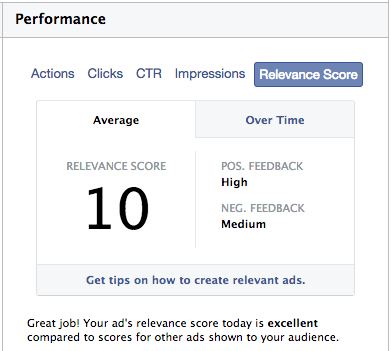

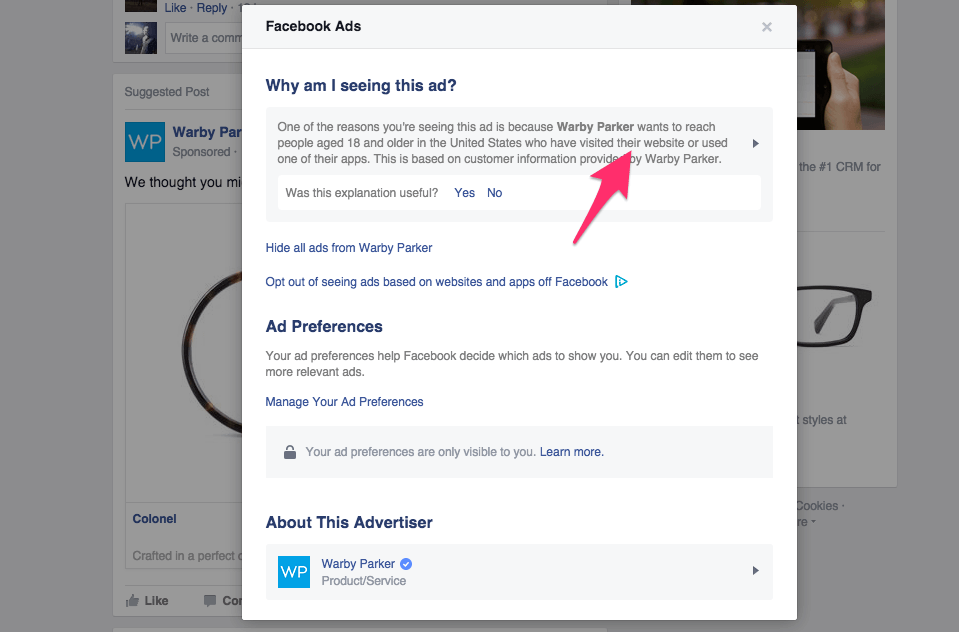

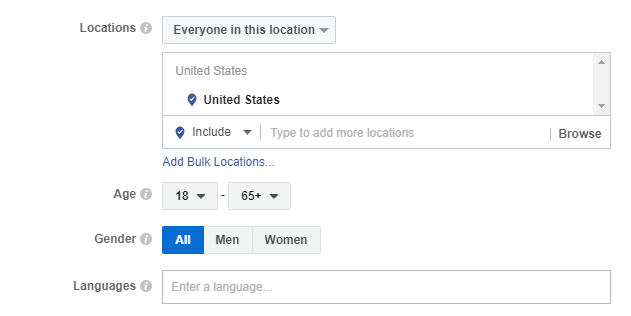
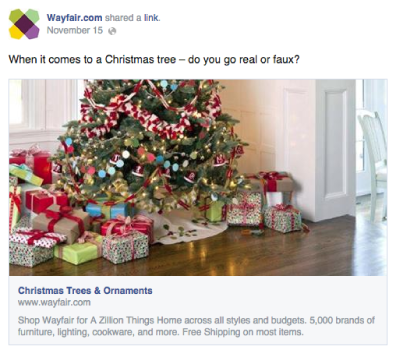
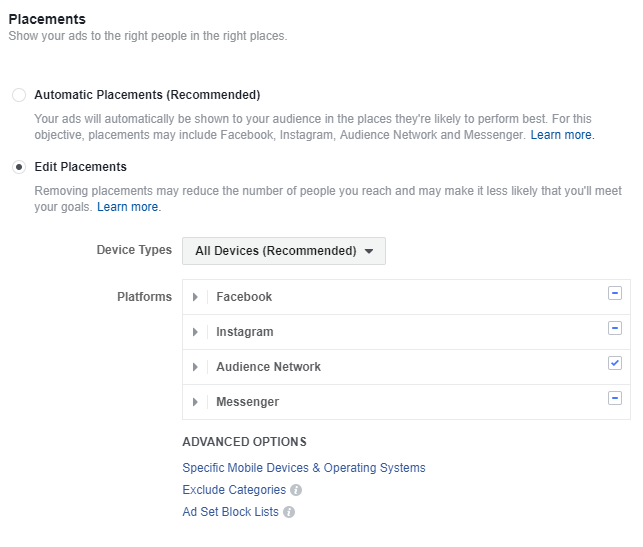
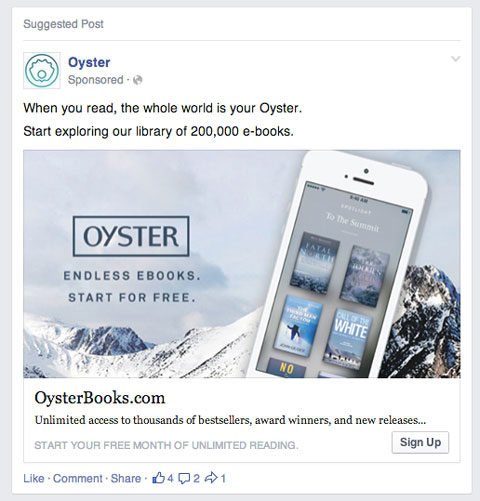

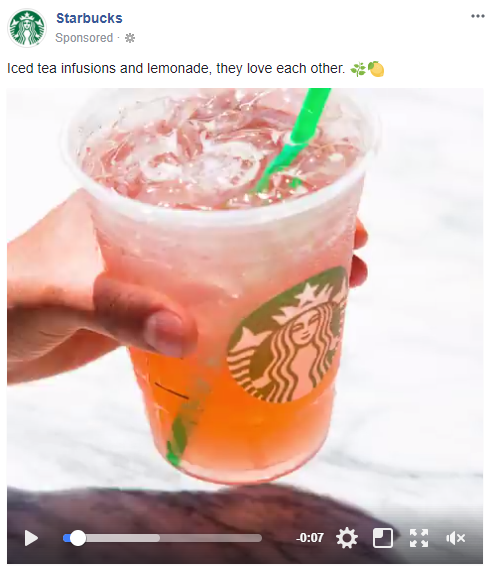
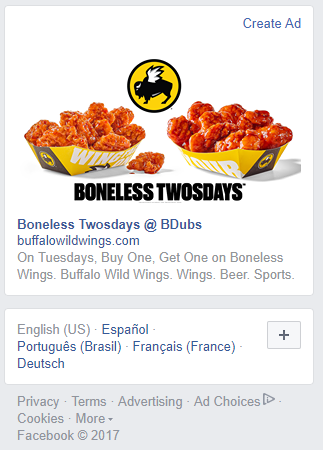

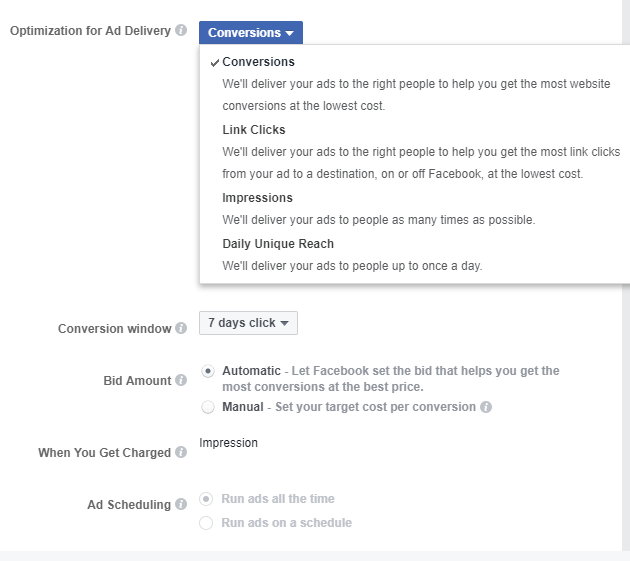
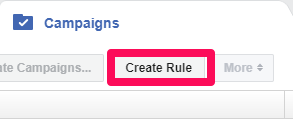
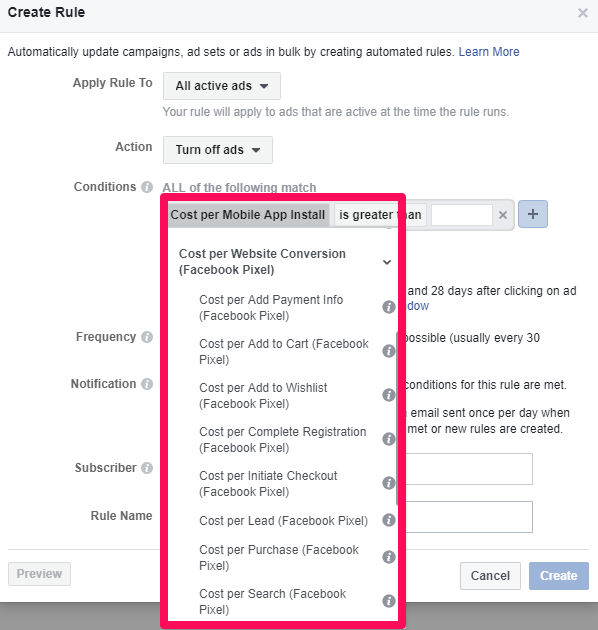
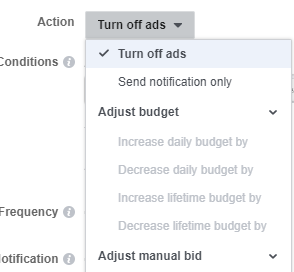
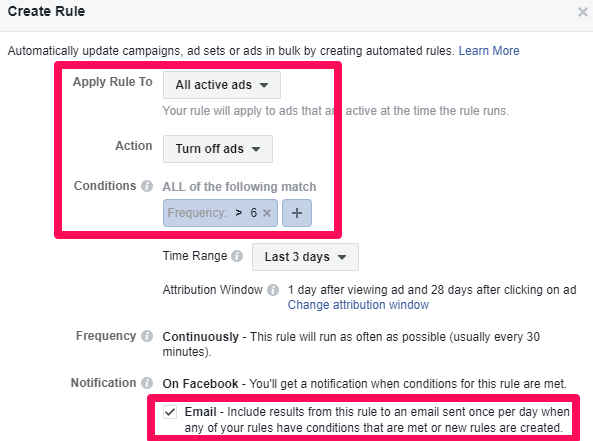
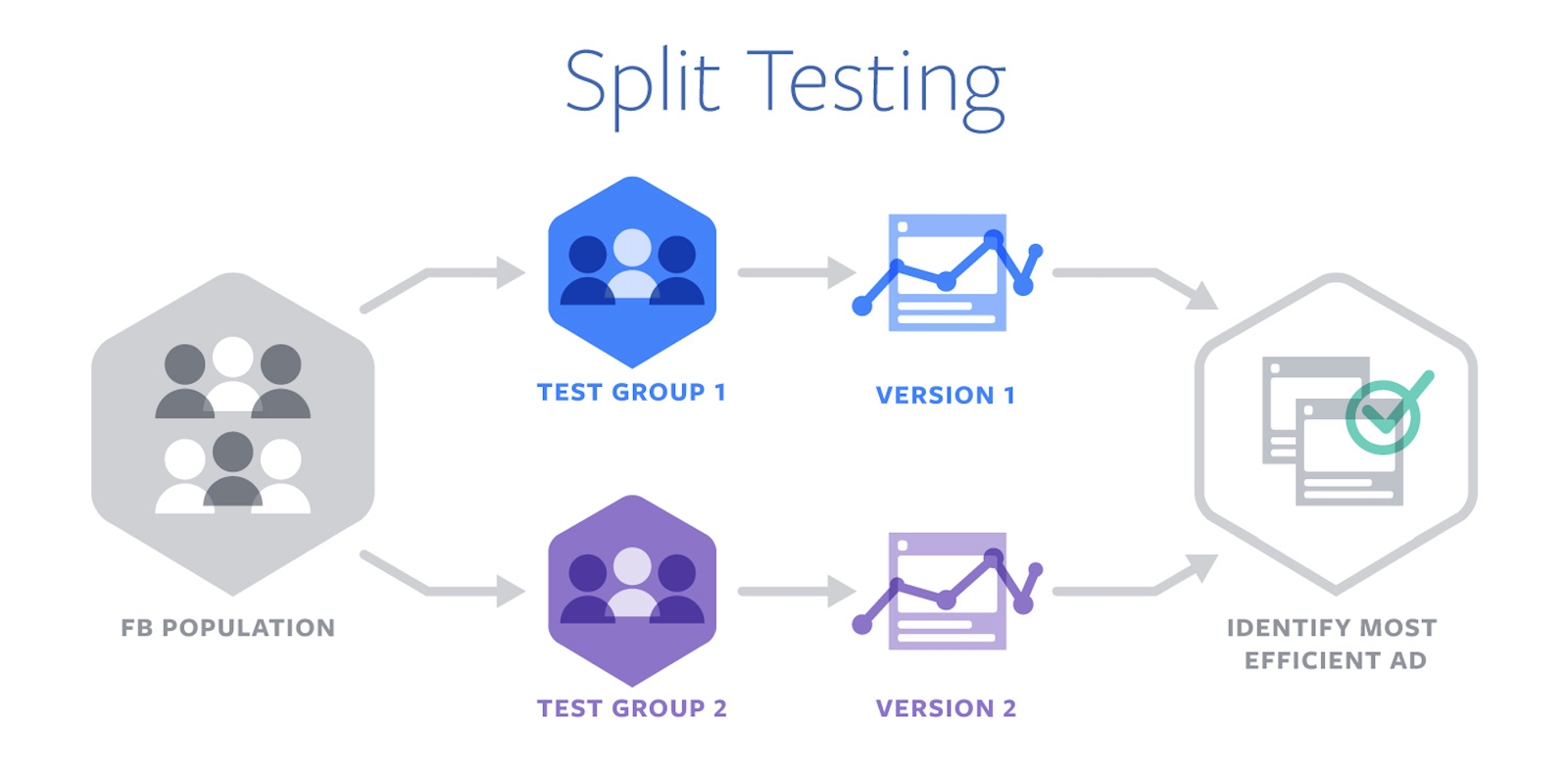

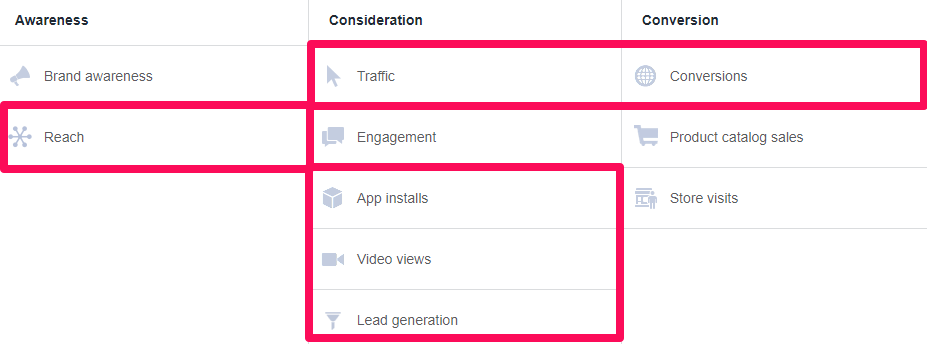
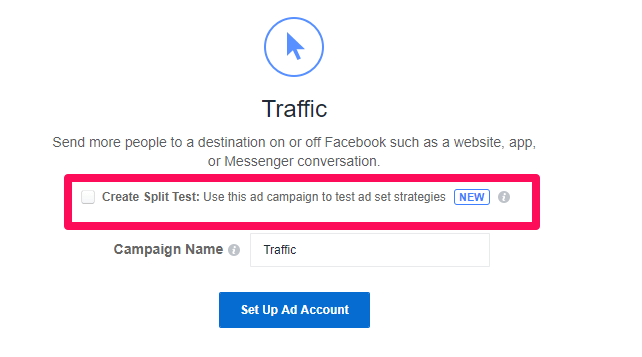
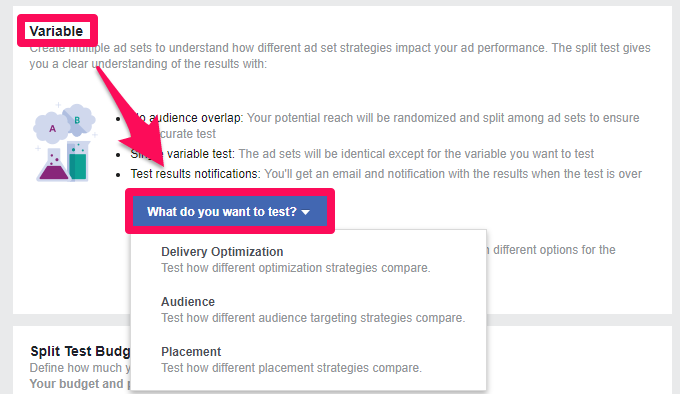
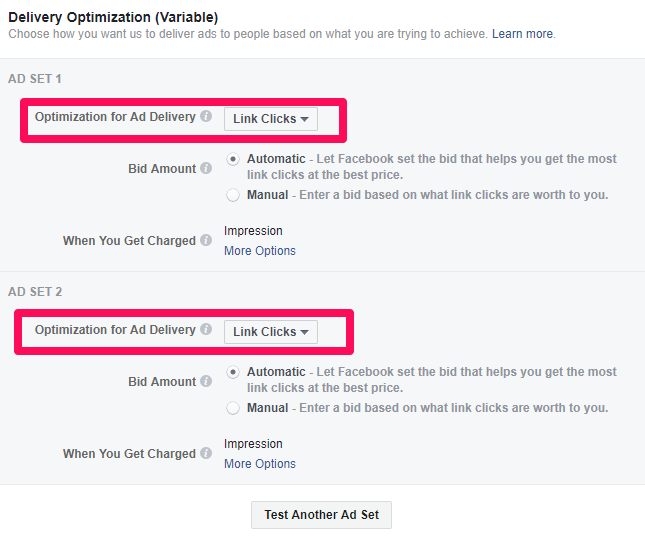

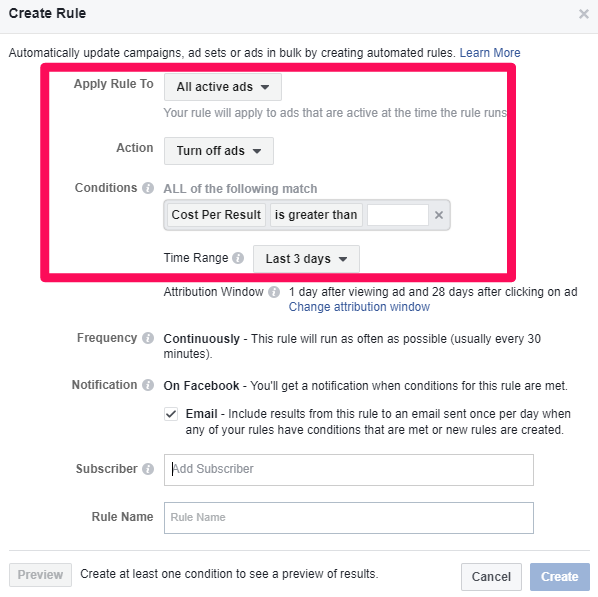
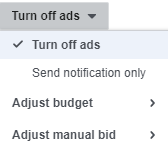
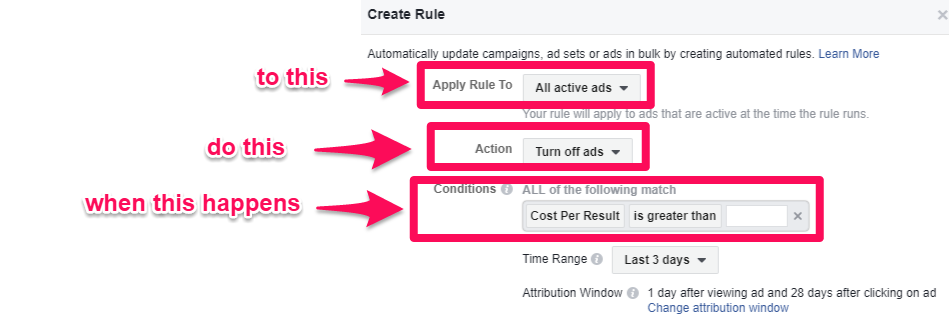
Comments (12)